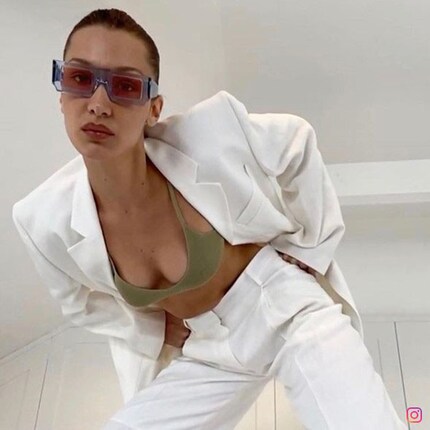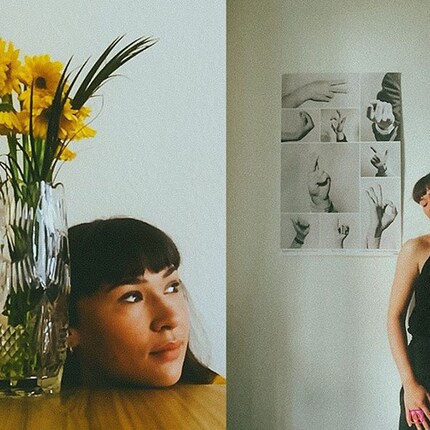
Ariel Universal+
72 Washing cycles, Washing powder

20-person fashion shoots are currently unthinkable. Not only the fashion industry, but also photographers have to rethink. Will this also work from home?
A prime example of a campaign that has just been created via Facetimen is provided by French designer Jacquemus: instead of flying Bella Hadid in, he had the model staged in her home via Facetime. The low-key campaign was in the can within a few hours.
It remains to be seen whether this trend is an emergency situation or whether it lays the foundation for a new type of shoot that will take place remotely in future using specially designed programmes. This approach is certainly convenient and cost-effective. Not to mention the CO2 emissions that we save when 20 noses are no longer jetting around for every 10-page fashion spread.
When I’m not exploring the depths of the sea as an open water diver, I enjoy plunging into the world of fashion. On the streets of Paris, Milan and New York is where I keep my eyes peeled for the latest trends. And I’ll show you how to take them from the catwalk to your everyday life.
From the latest iPhone to the return of 80s fashion. The editorial team will help you make sense of it all.
Show all"Lift your chin and look a little more to the left." - click, click. While the photographer gives instructions to a model, an entourage of 20 people, consisting of creative directors, assistants, make-up artists, caterers, stylists, fashion editors etc., bustle around in the background. Scenes like this are unthinkable in times of social distancing. But how can the new collections be presented when fashion weeks are cancelled worldwide and there are no more fashion spreads in magazines? If you want to survive, you have to be creative and act quickly.
The solution to the puzzle is the same one that gyms rely on: Video services such as Zoom, Skype or Face-Time. The principle is simple: the photographer gets in touch with the model via video chat. While he gives her instructions and snaps his screen, the model poses in the clothes that were sent to him in advance. Of course, glamorous settings such as white sandy beaches or a villa in Los Angeles are omitted. Make-up artists and stylists too. Not to mention the lighting effects.

It's not just luxury brands that are rethinking their approach, but also affordable fashion chains. Product images often feature homes or home gardens in the background. Fashion magazines are also taking action: The April cover of Italian Vogue is, of necessity, all in white. The magazine itself features a shoot that was also created via Facetime.
Photographers who have nothing to do with fashion also use this method. British photographer Tim Dunk uses the video call function for portrait shots. How does he do it? During a Facetime call, he uses his MacBook to take the pictures. His subject prefers to use an iPhone or, if necessary, an iPad. When Tim presses the button to take photos, Facetime records a 3-second video from which he extracts still images. He then edits the photos in the Lightroom programme. As he doesn't know his models and doesn't know how they live, he first asks them for a virtual flat tour so that he knows what he can work with. The "mannequins" also have to open or close doors and windows as required to create better lighting conditions.


Ariel Universal+
72 Washing cycles, Washing powder